The sea is brimming with weird and wonderful sea creatures, so we weren't stuck for choice when it came to picking our list of the world's weirdest marine creatures. From the amazing gulper eel to the scary-looking Johnson's abyssal seadevil, here are our favourite weirdest sea creatures – read on if you dare...
13 weirdest sea creatures
Dumbo octopus
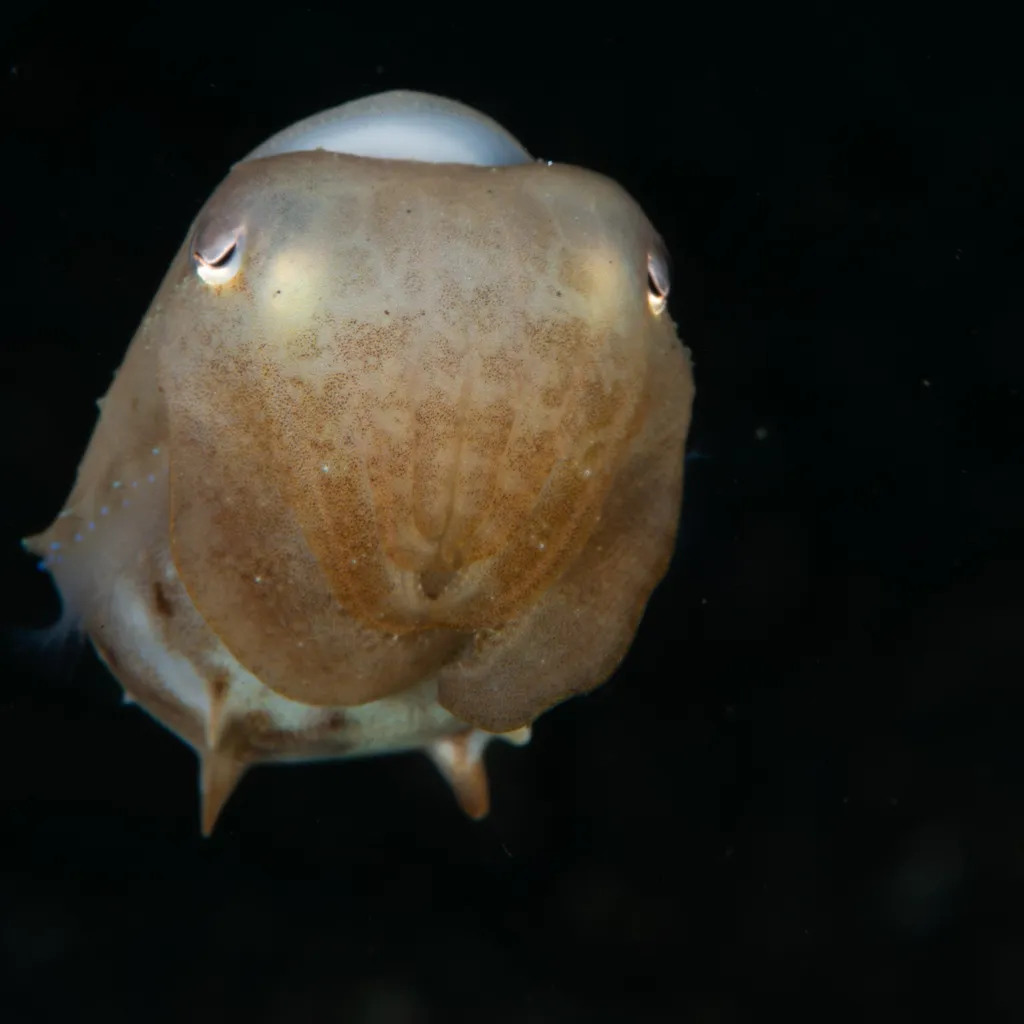
The Dumbo octopus – named after a certain cartoon elephant – is very much of this world, where it inhabits our deepest waters.
In 2019, an unmanned submersible filmed one on the seabed at a depth of nearly 7km in the Indian Ocean’s Java Trench, which is the deepest reliable record for any cephalopod.
Gulper eel
A gulper (or pelican) eel mostly looks like it should – long and sinuous – until it feeds, when it’s more like a balloon on a stick. This denizen of the deep is equipped with enormous jaws that extend backwards from the head, terminating in a pair of elbow-like hinges. Gulpers are lunge feeders, taking in smaller prey with a huge mouthful of water that causes the head to expand spectacularly. The water is then expelled through the gills, while crustaceans, fish and squid are swallowed.
Vampire squid
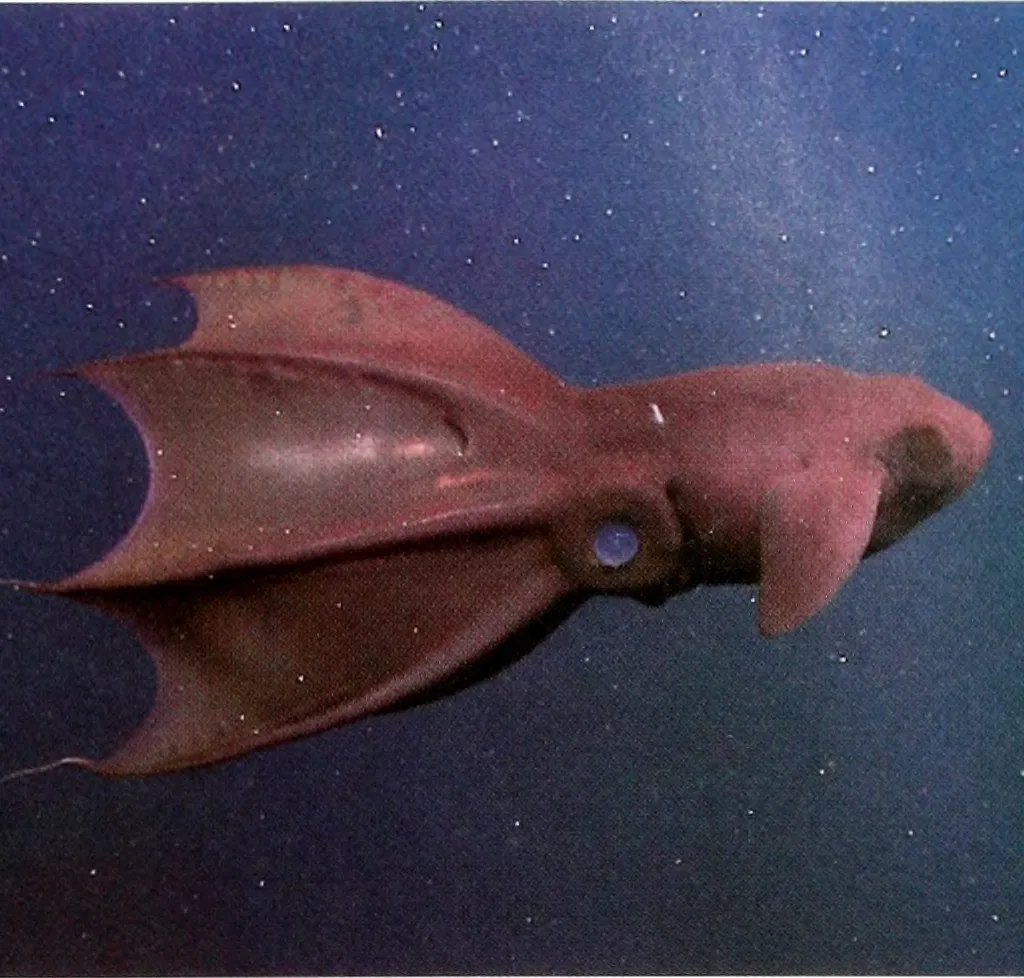
Strange things lurk in the planet’s deepest, darkest corners. And it doesn’t get much deeper and darker than the bottom of the ocean, or stranger than Vampyroteuthis infernalis – the ‘vampire squid from hell’.
Despite its name – inspired by its dark colour and the cloak-like webbing between its arms – the vampire squid is neither vampire nor squid. It is the sole member of its own cephalopod order.
Johnson's abyssal seadevil
Anything going by the name of Johnson’s abyssal seadevil is unlikely to score highly on the cute-and-cuddly scale. Though, to be fair, this one looks as terrified as it does terrifying. Equipped with needle-sharp teeth, a bioluminescent lure between its eyes and a stomach that can expand to accommodate prey much larger than itself, it is the quintessential deep-sea anglerfish.
Costasiella sea slug
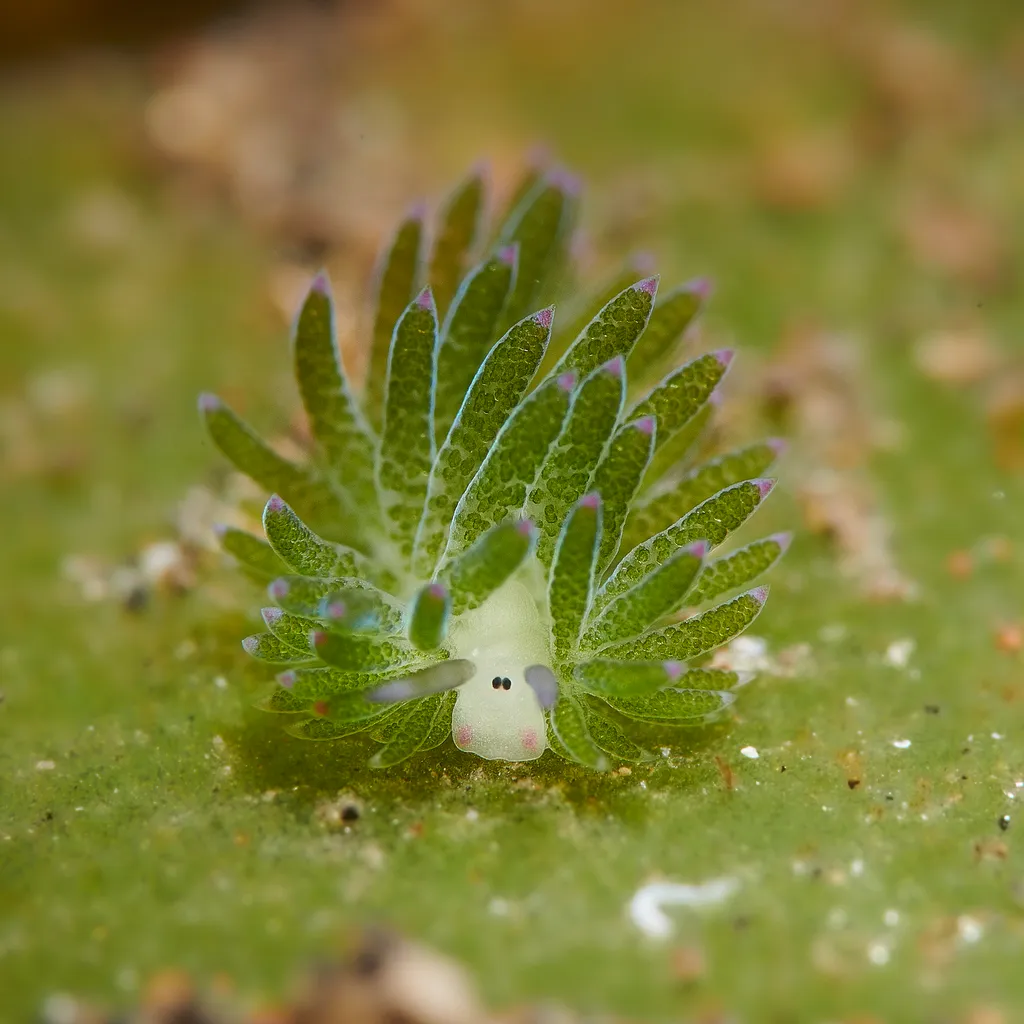
Sheep might be strict vegetarians, but they are mere amateurs compared to this ovine character, which is herbivorous to the point that it becomes part vegetable itself.
The Costasiella sea slug – also known as the ‘leaf sheep’ and ‘Shaun-the- sheep slug’ for obvious reasons – spends much of its time grazing on marine algae. But it doesn’t digest this plant matter entirely. Somehow, it separates the chloroplasts (the green organelles within a plant’s cells that convert sunlight into chemical energy) from the rest of the meal and embeds them in its own tissues, making the slug a rare example of a photosynthetic animal.
Emperor shrimp
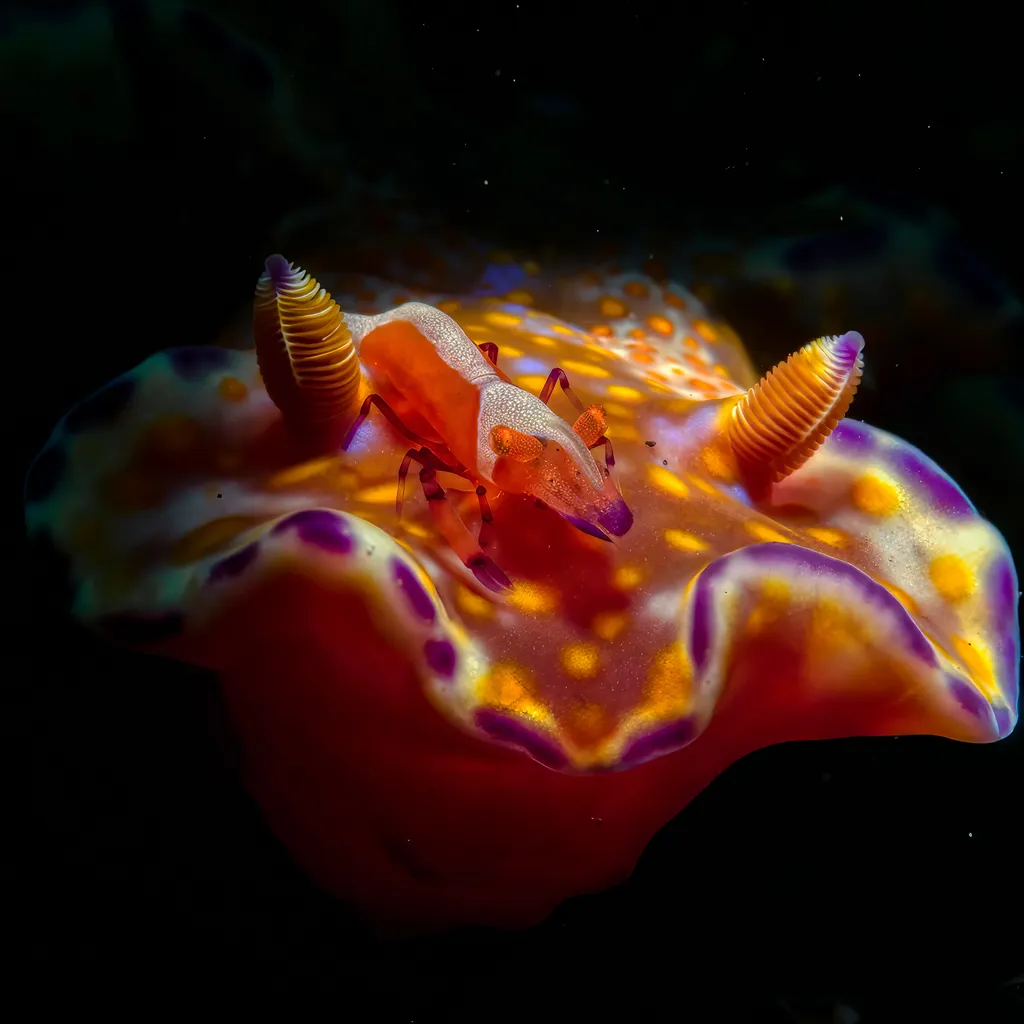
It’s hard to say whether the clashing colour combos on display here count as edgy sartorial elegance or a hideous fashion faux-pas. Either way, this gloriously garish couple are hard to ignore. An emperor shrimp will spend its whole life on the back of its seaslug host. The relationship is one of mutual convenience: the shrimp provides a dedicated cleaning service in return for the protection bestowed by the mollusc’s chemical defences.
Giant isopod
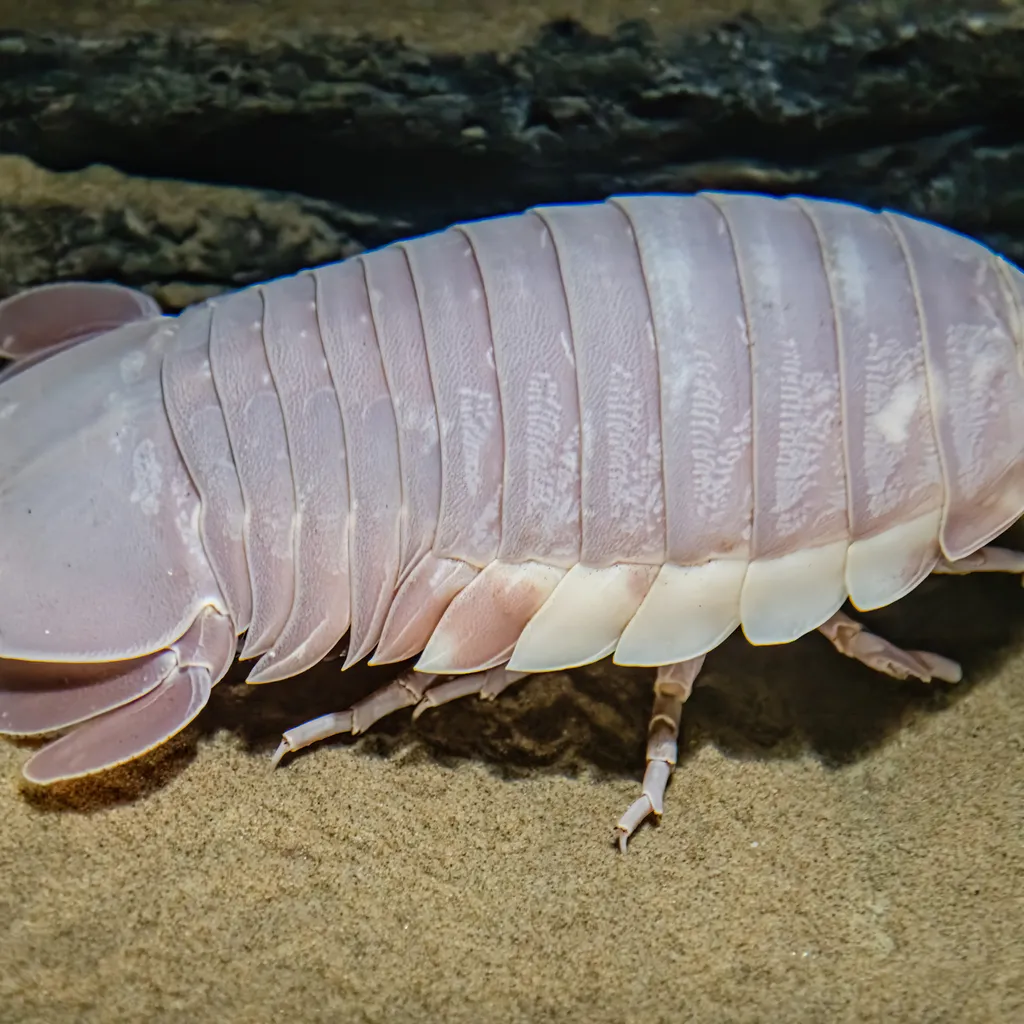
A giant woodlice a foot long? Sounds like a mythical creature from the world of Harry Potter, but they are out there. Fortunately these creatures live deep in the ocean, at least 500 metres deep to be precise.
Not much is known about these arthropods but it is thought they are not as fearsome as the look, and scavenge on whatever they can find, from crab flesh to marine worms - well there's not a lot of choice that far down
Sea Pig
You don’t get much weirder looking than the sea pig, a genus of sea cucumbers that look straight out of Doctor Who. Named for their plump, pink, and rounded bodies, sea pigs are very abundant, but you are unlikely to ever see one, living as they do at depths of over 1,200 to 5,000 metres (that’s over three miles!).
Their mode of locomotion is one of their many bizarre characteristics. They crawl across the deep-sea floor using specialised tubular “legs” that can be inflated and deflated with water, moving with hydraulics. This also allows them to churn up the soft mud under their “feet” as they move, freeing bits of decaying plant and animal material to snack on.
Giant siphonophore
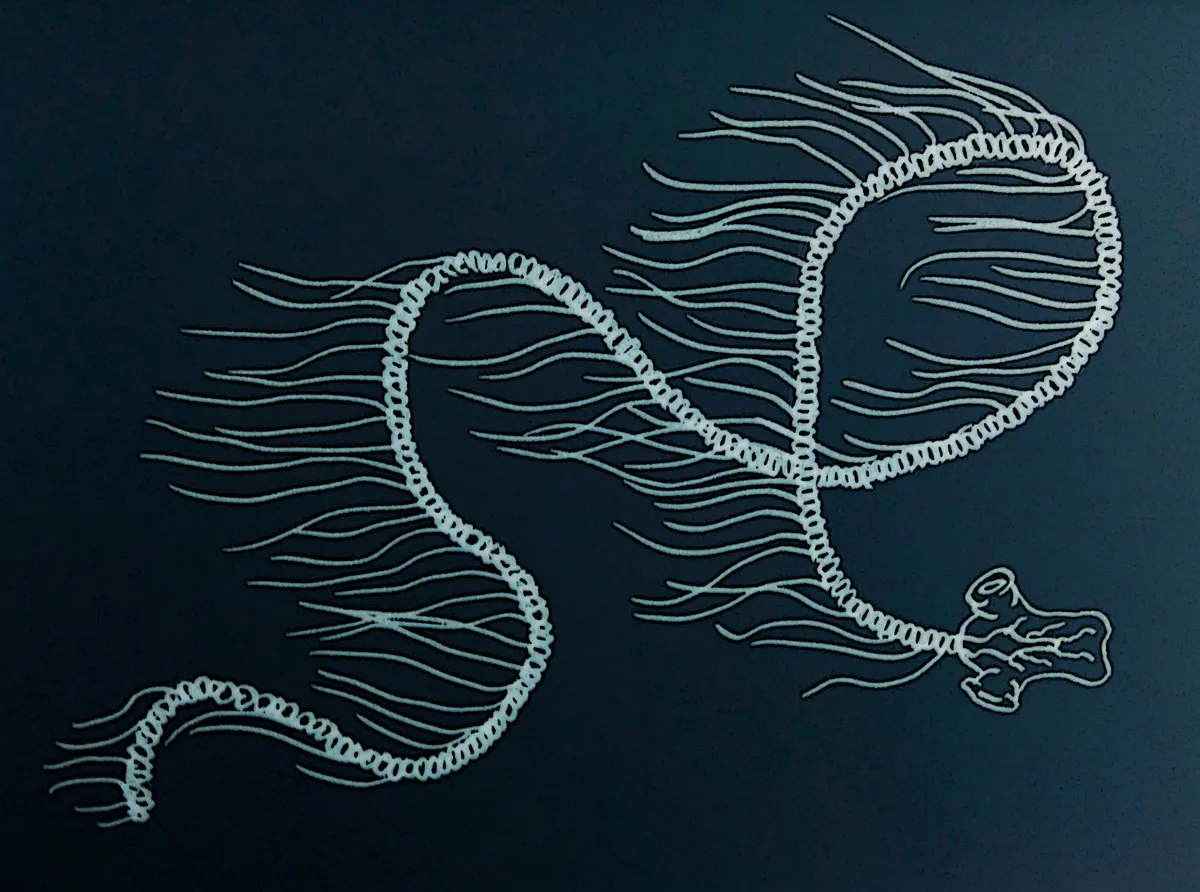
It’s not a fish, a whale or a jellyfish – the giant siphonophore (Praya dubia) is the unlikely giant of the underwater world.
The giant siphonophore grows to more than 40m and lives in cold waters at depths of 50–200m. It is a colonial animal, which means it’s actually a long chain of individuals. Each one has a dedicated role – some sting and capture food, others digest and spread the nutrition throughout the colony, while the remainder are responsible for reproduction.
Definitely worth of a place on our weirdest sea creatures list - in fact, it made our most weirdest animals ever list.
Doto greenamyeri nudibranch
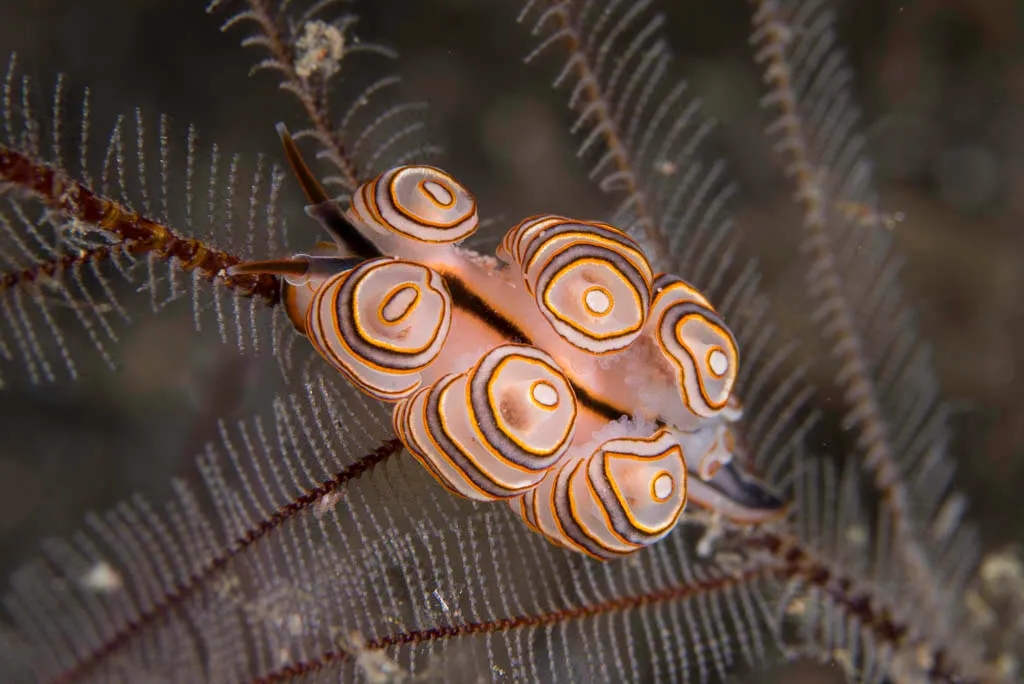
Whatever this is, it seems to have more eyeballs than are strictly necessary. Doto greenamyeri is a nudibranch sea slug, only described in 2015. It’s about 15mm long, and those aren’t eyeballs. (Nudibranchs have tiny eyes and very poor eyesight; they can just about distinguish light surroundings from dark.) Those are chemically-protected protuberances known as ‘cerata’, which flamboyantly advertise their toxicity to predators and also function as gills. The cerata have been likened to honey-drizzlers and stacks of pancakes or doughnuts.
Polychaete worm
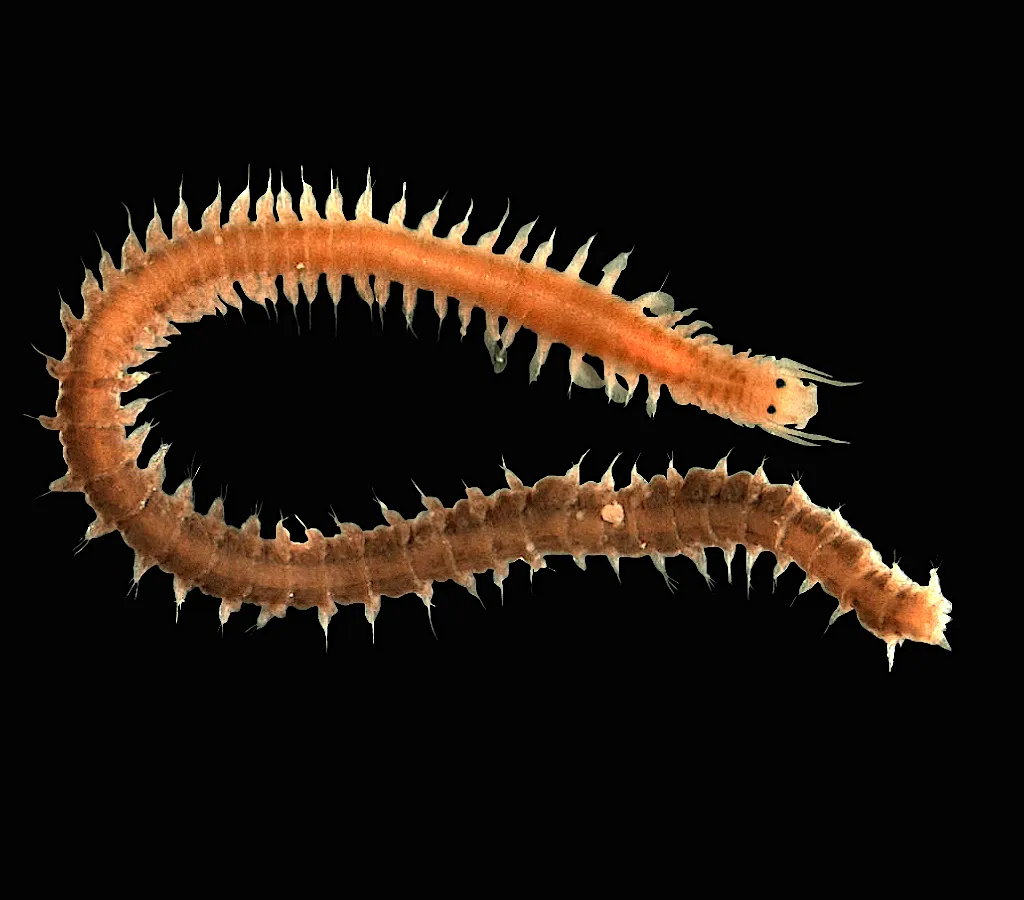
The feeling on the BBC Wildlife team is that this creature resembles something dreamed up by Jim Henson’s studio. But this magnificent marine worm is real enough, and lives happily on deep-sea hydrothermal vents in the Atlantic. It is a polychaete, or bristle worm, in the family Nereididae, which forms part of a stunningly diverse class with well over 10,000 species described so far. The worm’s impressive ‘toupee’ is a cluster of sensory hairs.
Angelshark
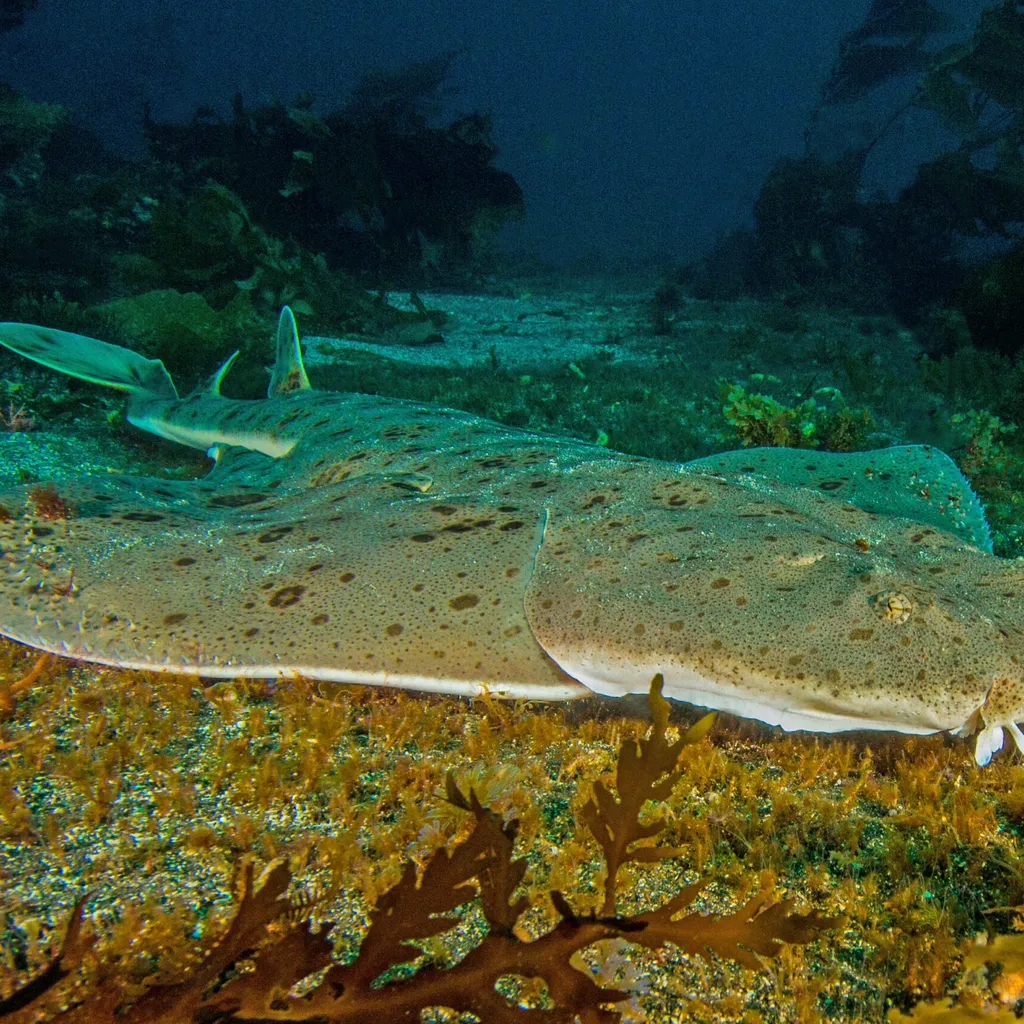
This shark looks like its been run over by a steam roller and well and truly flattened. The angelshark looks as if it’s half way between a shark and a ray and they only grow to about 2.4 metres long. The have large, billowing fins on their sides, and two small dorsal fins perched atop the tail. It’s advantageous for them to be as flat as possible as they spend most of their time buried in the sand on the sea bottom.
Bobbit worm
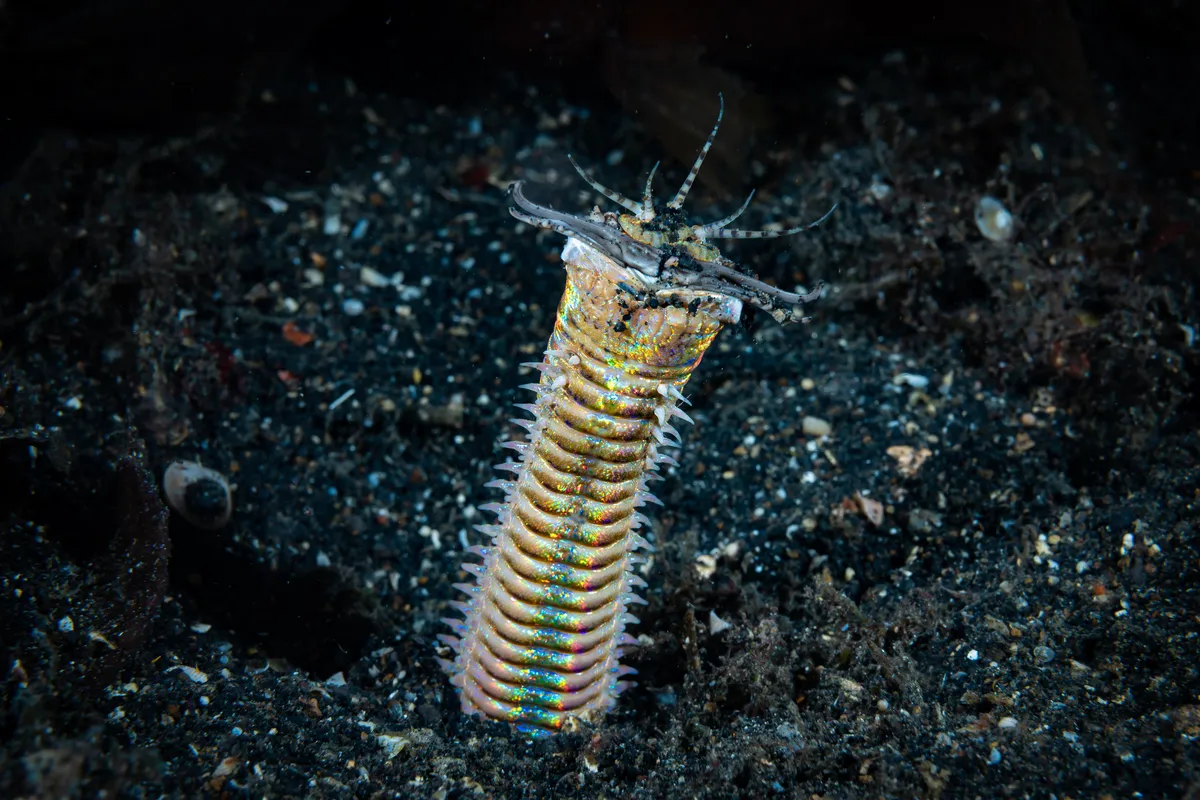
The Bobbit worm is a fearsome marine predator that burrows into the sand and waits for unsuspecting prey. Up to three metres long this worm inhabit warm seas worldwide, and hide its bulk by burying itself deep in the sediment on the ocean floor, with only its tentacles exposed.
The predator uses its sensory appendages to detect passing prey. When something ventures close enough, it lurches from the sand like a coiled spring. snapping its jaws over its victim in a strike so ferocious that the prey is often sliced in half.
